Safe range for blood sugar. Safe Blood Sugar Ranges for Diabetes: Diagnosis, Treatment, and Management
What are normal blood sugar levels for people with and without diabetes. How do target glucose ranges differ for various groups. Why is blood sugar monitoring crucial for diabetes management. What factors influence blood glucose levels.
Understanding Blood Sugar Levels and Diabetes
Blood sugar, or glucose, is a key indicator of metabolic health. For individuals with diabetes, maintaining appropriate blood sugar levels is crucial for effective management of the condition. However, target ranges can vary depending on factors such as the type of diabetes, age, and overall health status.
Are there universal “normal” blood sugar levels? In reality, glucose levels fluctuate throughout the day, even in people without diabetes. However, medical guidelines provide target ranges to help individuals with diabetes manage their condition effectively.
Blood Sugar Targets for Different Groups
The American Diabetes Association (ADA) provides guidelines for blood glucose targets, which were updated in 2022. These targets serve as a starting point for diabetes management:
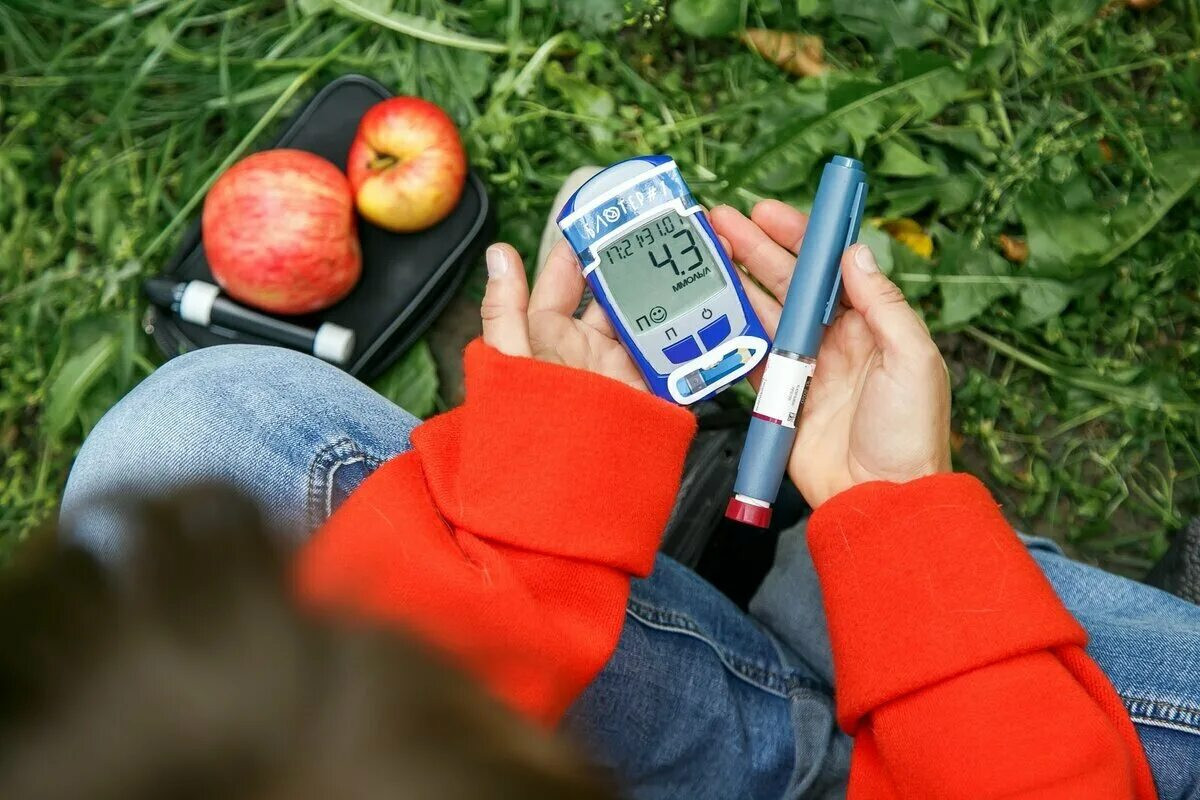
- Adults with type 1 or type 2 diabetes: 80-130 mg/dL before meals
- Children with type 1 diabetes: 90-130 mg/dL before meals, 90-150 mg/dL at bedtime/overnight
- Pregnant individuals with type 1 diabetes or gestational diabetes: Below 140 mg/dL one hour after meals, or below 120 mg/dL two hours after meals
- Adults 65 or older: 80-180 mg/dL, or 80-200 mg/dL for those in poorer health or assisted living situations
- Individuals without diabetes: Below 99 mg/dL fasting, below 140 mg/dL after meals
Why do these targets differ? The variations account for different physiological needs and risk factors associated with each group. For instance, older adults may have higher targets to reduce the risk of hypoglycemia, which can be particularly dangerous in this age group.
The Importance of Blood Sugar Monitoring in Diabetes Management
Monitoring blood glucose levels is a cornerstone of diabetes management. Why is this so crucial? Regular monitoring allows individuals to:
- Understand how different foods, activities, and medications affect their blood sugar
- Make informed decisions about insulin dosing or medication adjustments
- Detect and prevent episodes of hypoglycemia or hyperglycemia
- Track long-term trends in glucose control
- Collaborate effectively with their healthcare team to optimize treatment
How often should blood sugar be checked? The frequency of monitoring depends on the individual’s type of diabetes, treatment plan, and overall health status. Some may need to check several times a day, while others might monitor less frequently.

Factors Influencing Blood Glucose Levels
Blood sugar levels are affected by a complex interplay of various factors. Understanding these can help individuals with diabetes better manage their condition.
Dietary Factors
What we eat has a significant impact on blood glucose levels. Carbohydrates, in particular, have the most direct effect. How do different types of carbohydrates affect blood sugar? Simple carbohydrates, like those found in sugary foods and drinks, can cause rapid spikes in blood glucose. Complex carbohydrates, such as those in whole grains and vegetables, typically lead to a more gradual increase.
Physical Activity
Exercise can have both immediate and long-term effects on blood sugar levels. During physical activity, muscles use glucose for energy, which can lower blood sugar. However, intense exercise can sometimes cause a temporary increase in blood glucose due to the release of stress hormones.
Medications
Insulin and other diabetes medications are designed to help manage blood glucose levels. The timing, dosage, and type of medication can significantly influence blood sugar patterns throughout the day.
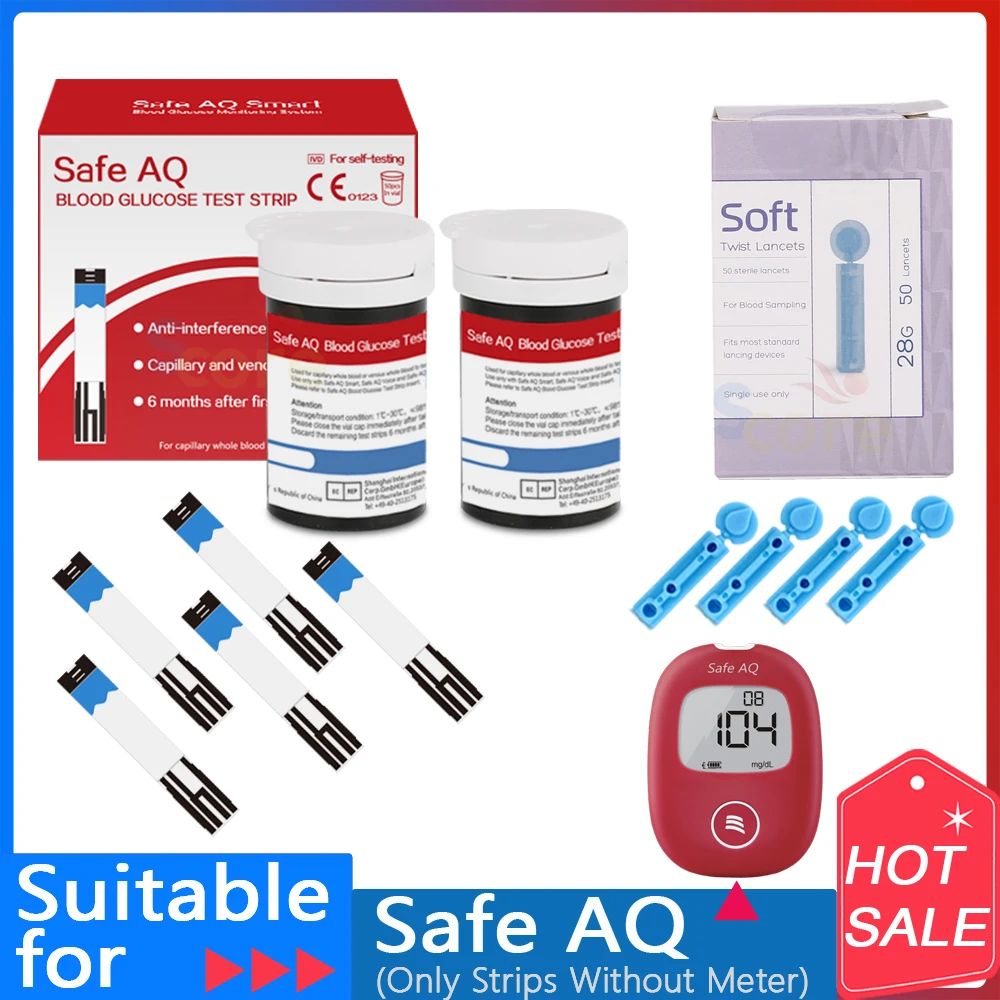
Stress and Illness
Both physical and emotional stress can affect blood sugar levels. Why does stress impact glucose? Stress hormones like cortisol can cause the liver to release more glucose into the bloodstream, potentially leading to higher blood sugar levels.
Advanced Blood Sugar Monitoring Technologies
Advancements in technology have revolutionized blood sugar monitoring for many individuals with diabetes. What are some of these innovative tools?
Continuous Glucose Monitors (CGMs)
CGMs provide real-time, continuous data on glucose levels. How do CGMs work? A small sensor inserted under the skin measures glucose levels in the interstitial fluid, transmitting data to a receiver or smartphone app. This technology allows users to see trends and patterns in their glucose levels, enabling more proactive management.
Flash Glucose Monitoring
Similar to CGMs, flash glucose monitoring systems use a sensor worn on the body. However, users must actively scan the sensor with a reader or smartphone to get a glucose reading. This method provides a snapshot of current glucose levels and recent trends.

Interpreting Blood Sugar Data: Beyond the Numbers
While target ranges provide a useful framework, it’s essential to interpret blood sugar data in context. What factors should be considered when analyzing glucose readings?
- Time of day and relation to meals
- Recent physical activity
- Medication timing and dosage
- Stress levels and overall health status
- Long-term trends rather than isolated readings
How can this data be used effectively? By identifying patterns and trends, individuals with diabetes and their healthcare providers can make informed decisions about treatment adjustments and lifestyle modifications.
Strategies for Maintaining Target Blood Sugar Levels
Achieving and maintaining target blood sugar levels requires a multifaceted approach. What strategies can help individuals with diabetes manage their glucose levels effectively?
Balanced Nutrition
A well-planned diet is crucial for blood sugar management. What dietary approaches can help? Focusing on balanced meals that include complex carbohydrates, lean proteins, and healthy fats can help stabilize blood glucose levels. Portion control and consistent meal timing are also important factors.

Regular Physical Activity
Exercise plays a vital role in blood sugar control. How does physical activity benefit glucose management? Regular exercise can improve insulin sensitivity, helping the body use glucose more effectively. It’s important to work with a healthcare provider to develop a safe and effective exercise plan.
Medication Adherence
For many individuals with diabetes, medications are a crucial part of blood sugar management. Why is medication adherence so important? Consistent use of prescribed medications, whether insulin or oral diabetes drugs, helps maintain stable glucose levels and prevents complications.
Stress Management
Given the impact of stress on blood sugar levels, stress management techniques can be valuable tools. What are some effective stress reduction strategies? Techniques such as mindfulness meditation, deep breathing exercises, and regular physical activity can help mitigate the effects of stress on glucose levels.
The Role of HbA1c in Long-Term Blood Sugar Assessment
While daily blood sugar monitoring provides valuable short-term data, the HbA1c test offers insight into long-term glucose control. What is HbA1c, and why is it important?

HbA1c, or glycated hemoglobin, reflects average blood sugar levels over the past 2-3 months. This test provides a broader picture of glucose management and is typically performed every 3-6 months for individuals with diabetes.
HbA1c Targets
The ADA recommends the following HbA1c targets:
- Below 7% for most adults with diabetes
- Below 6.5% for some individuals, if achievable without significant hypoglycemia
- Below 8% for older adults or those with multiple comorbidities
How does HbA1c relate to average blood glucose levels? An HbA1c of 7% corresponds to an estimated average glucose of 154 mg/dL. This information can help individuals and healthcare providers set and adjust treatment goals.
Addressing Blood Sugar Emergencies
Despite careful management, blood sugar emergencies can occur. It’s crucial for individuals with diabetes and their caregivers to recognize and respond to these situations promptly.
Hypoglycemia (Low Blood Sugar)
Hypoglycemia occurs when blood glucose levels drop below 70 mg/dL. What are the symptoms of hypoglycemia? Common signs include shakiness, sweating, confusion, and in severe cases, loss of consciousness.
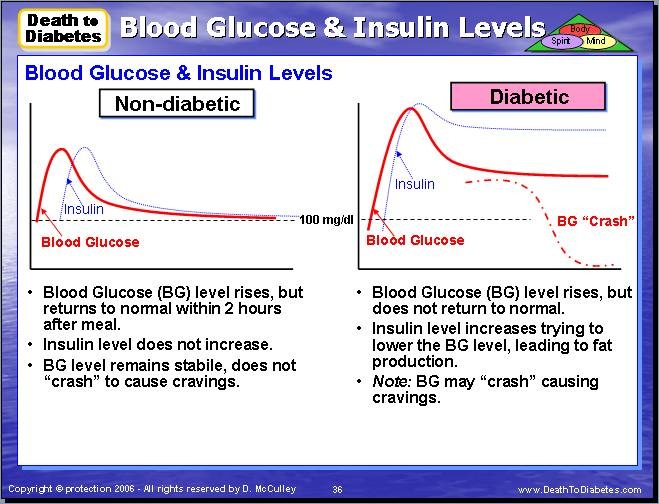
How should hypoglycemia be treated? The “15-15 rule” is often recommended:
- Consume 15 grams of fast-acting carbohydrates (e.g., glucose tablets, fruit juice)
- Wait 15 minutes and recheck blood sugar
- If still below 70 mg/dL, repeat the process
Hyperglycemia (High Blood Sugar)
Hyperglycemia refers to blood glucose levels above target range. What are the symptoms of hyperglycemia? Common signs include increased thirst, frequent urination, fatigue, and blurred vision.
How should hyperglycemia be addressed? Treatment may involve adjusting medication dosages, increasing physical activity, or modifying diet. In cases of severe hyperglycemia, immediate medical attention may be necessary to prevent complications such as diabetic ketoacidosis.
The Future of Blood Sugar Management
As technology and medical research advance, new approaches to blood sugar management are emerging. What innovations are on the horizon?
Artificial Pancreas Systems
These systems combine continuous glucose monitoring with automated insulin delivery, mimicking the function of a healthy pancreas. How do artificial pancreas systems work? They use algorithms to analyze glucose data in real-time and adjust insulin delivery accordingly, potentially reducing the burden of diabetes management.
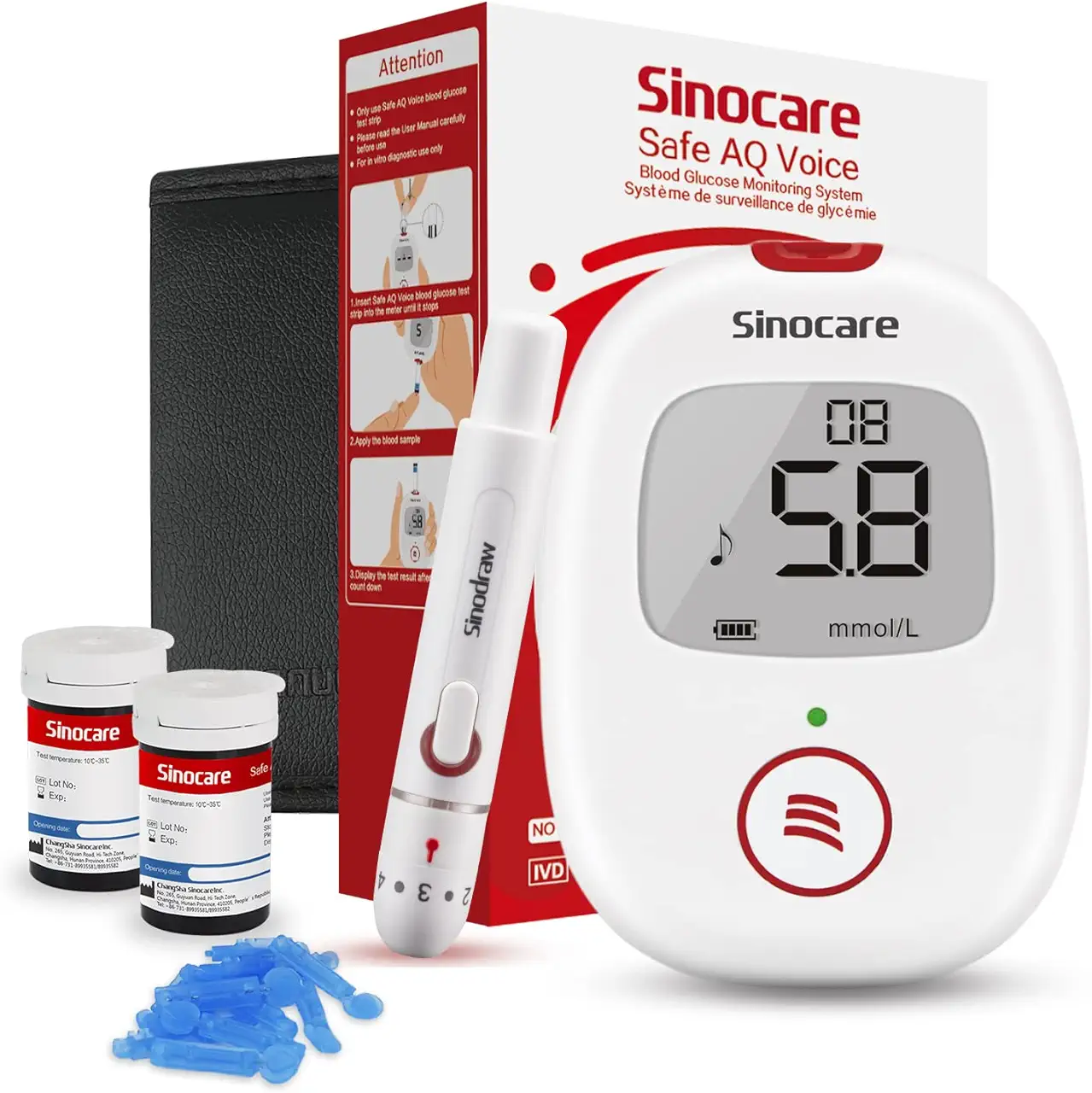
Smart Insulin
Researchers are developing “smart” insulins that can self-activate in response to blood glucose levels. How could smart insulin revolutionize diabetes care? This technology could potentially reduce the risk of hypoglycemia and simplify insulin dosing for individuals with diabetes.
Non-Invasive Glucose Monitoring
Several companies are working on developing non-invasive methods for blood glucose monitoring. What approaches are being explored? Technologies such as optical sensors, microwave technology, and even smart contact lenses are being investigated as potential alternatives to traditional fingerstick or subcutaneous sensor methods.
As our understanding of diabetes and glucose metabolism continues to evolve, so too will the strategies and technologies for blood sugar management. By staying informed about these advancements and working closely with healthcare providers, individuals with diabetes can look forward to increasingly effective and personalized approaches to maintaining healthy blood sugar levels.
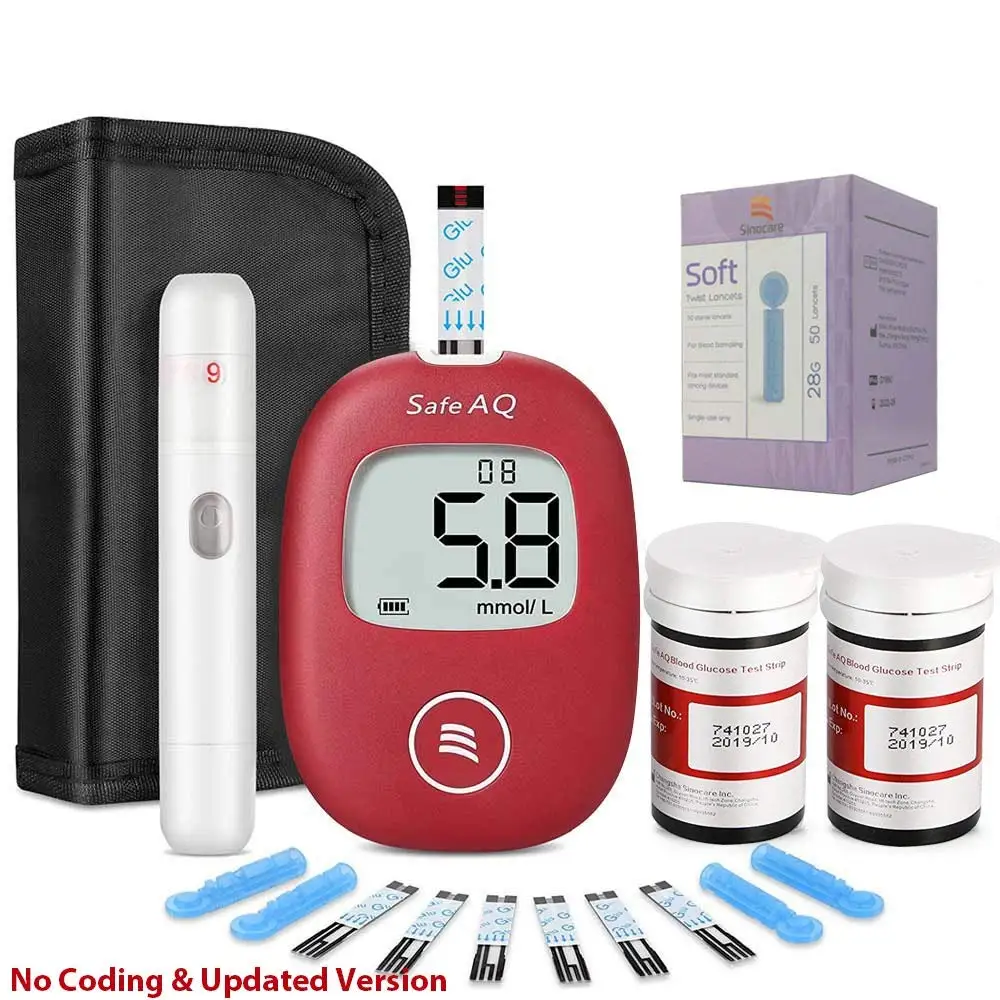
What Are ‘Normal’ Blood Sugar Levels?
Your blood sugar goal can vary depending on whether you have diabetes, the type of diabetes you have, and whether you are pregnant.
Keeping track of your blood sugar is a key part of diabetes management. Whether those glucose levels are checked with a fingerstick meter or a continuous glucose monitor (CGM), it’s an important part of daily life with this condition, along with the future possibility of diabetes-related complications.
But just what is considered “normal” when it comes to blood sugar levels?
Diabetes is different for everyone, meaning that target goals will vary for each person and those goals will depend on many different factors. While this is an area to consult with your diabetes care team about, the medical community has guidance on what certain people should strive for in blood glucose levels.
There’s no magic number for your blood sugar. However, many people with diabetes strive to keep their glucose levels under 140 mg/dL on average.
Many authorities — including the Centers for Disease Control and Prevention (CDC) and World Health Organization (WHO) — explain glucose levels and what people with diabetes should work toward achieving, at a high level. The 2022 standards from the American Diabetes Association (ADA) are a set of guidelines followed by many professionals in the diabetes field. This chart details goals for specific groups of people with diabetes.
| Before meals (fasting) | After meals (post-prandial) | Other | |
|---|---|---|---|
| Adults with type 1 diabetes (see guidance) | 80–130 mg/dL | ||
| Adults with type 2 diabetes (see guidance) | 80–130mg/dL | ||
| Children with type 1 diabetes (see guidance) | 90-130 mg/dL | 90–150 mg/dL at bedtime/overnight | |
| Pregnant people (T1D, gestational diabetes) (see guidance) | 140 mg/dL (1 hour after) | 120 mg/dL (2 hours after) | |
| 65 or older (see guidance) | 80–180 mg/dL | 80–200 mg/dL for those in poorer health, assisted living, end of life | |
| Without diabetes | 99 mg/dL or below | 140 mg/dL or below |
Importantly, the ADA changed its glucose level guidance in 2015 to reflect a change in thinking about overtreating and hypoglycemia concerns. The lowest target had been 70 mg/dL. Still, a study at the time determined that adults, children, and those who are older might be more prone to overtreating — especially if they use varying doses of insulin or glucose-lowering medications.
The lowest target had been 70 mg/dL. Still, a study at the time determined that adults, children, and those who are older might be more prone to overtreating — especially if they use varying doses of insulin or glucose-lowering medications.
As with all aspects of diabetes management, these guidelines are used as a starting point by the medical community. One’s individual goals may vary, based on your personal needs. Make sure to consult with your doctor and diabetes care team to determine what may be best for you.
A key part of managing diabetes involves checking blood sugars, or glucose levels.
In type 1 diabetes (T1D), a person’s pancreas does not produce the insulin they need. In type 2 diabetes (T2D), the body may not make or use insulin correctly anymore.
For either T1D or T2D, ensuring glucose levels stay as level as possible is the goal. Sometimes insulin or diabetes medications are used based on the type of diabetes and personal needs. Many factors affect glucose levels, including food, exercise, insulin, medications, stress, etc.
Glucose level targets may vary for everyone based on their unique needs.
Achieving a “normal” blood sugar or glucose level is a bit of a misnomer. Often, the word “normal” is used to reference what someone’s blood sugars might be if they didn’t have diabetes.
However, this terminology is flawed because even people without diabetes do see blood sugar spikes, especially after eating and when consuming something with high amounts of sugar, or a complex carbohydrate like pizza or pasta.
Even though that person’s body will immediately start working to counterbalance that rising glucose level by producing more insulin, their blood sugars may still spike for a brief time even beyond those “normal” ranges. The same can happen with intense exercise or in high-stress situations if the person’s natural glucose metabolizing cannot quickly balance everything out.
For those with diabetes, the fact that our bodies don’t make or use insulin correctly means we must manually keep tabs on blood sugar levels and take enough insulin — or glucose-lowering medication — to balance everything out.
Language matters in diabetes
Words make a difference when you’re talking about diabetes. That’s especially true in the context of blood sugar levels and how someone manages their health.
Here are some suggestions on language choices when talking with someone about their blood sugars and glucose levels.
- Try to avoid using terms like “good” or “bad” for higher or lower blood sugars.
- Instead, try to not tie value judgments to these numbers. Think about them as just numbers, “in range” or not, and pieces of data to help make a decision in diabetes care. Sometimes glucose numbers are too low or too high, and it’s helpful for the person with diabetes to understand why those glucose fluctuations are happening.
- Try to avoid judgment and blame with phrases like “What did you do?” when asking about higher or lower blood sugars.
- Instead, use phrases: “Tell me about…” or “Do you know why that happened?”
- Try to avoid asking a child or adult about their blood sugars as soon as you see them.
 This can make it seem like diabetes defines them and all you see is their numbers.
This can make it seem like diabetes defines them and all you see is their numbers.- Instead, try talking with them about their day and any highlights before moving into the diabetes discussion.
Often, children and adults with diabetes can feel disappointed, frustrated, and angry about their blood sugars and diabetes management overall. This can lead to feelings of shame and guilt, if they can’t achieve what they view as “perfect” results. As a result, that can lead to diabetes burnout for the child or adult and cause them to lose interest in managing their diabetes as needed.
Was this helpful?
A1C measures your average blood sugar over the past 3 months.
You can have your A1C measured with a blood draw in your doctor’s office or lab. Some doctors can also perform a fingerstick blood test to check your A1C level.
When sugar enters your bloodstream, it binds to a protein called hemoglobin. People with high blood sugar have a higher percentage of the hemoglobin protein coated with sugar.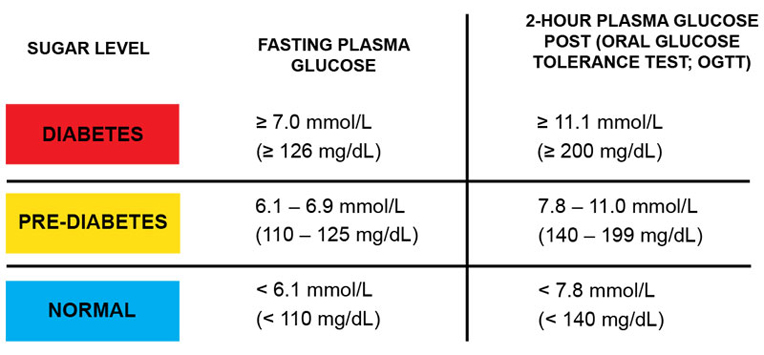 Your A1C result will give you an indication of what percentage of your hemoglobin is bound to sugar.
Your A1C result will give you an indication of what percentage of your hemoglobin is bound to sugar.
- Standard (no diabetes): Less than 5.7%
- Prediabetes: 5.7% to 6.5%
- Diabetes: 6.5% or higher
In general, the ADA and other clinical guidelines for people with diabetes is that you should work closely with your diabetes care team to determine what’s best for your A1C goal. Generally, clinicians advise for an A1C of being safely 7.0%, though that can vary depending on one’s individual care plan.
It’s important to keep in mind that A1C levels do not reflect all of the nuances of one’s diabetes management, meaning it doesn’t always reflect your glucose variability, meaning that A1C doesn’t offer insight into high or low blood sugars, and it can be manipulated if your blood sugars fluctuate regularly.
The A1C is not the same as your blood sugar average, which might be displayed on a fingerstick meter or your continuous glucose monitor (CGM). That’s because the A1C is limited in its scope and does not reflect your high and low blood sugars, nor does it reflect any glucose variability if you have dramatic spikes or drops in glucose levels.
That’s because the A1C is limited in its scope and does not reflect your high and low blood sugars, nor does it reflect any glucose variability if you have dramatic spikes or drops in glucose levels.
As a result, many diabetes professionals have moved away from considering the A1C the sole “gold standard” for someone’s diabetes management. Instead, they use that A1C in addition to time in range (TIR) figures, showing how often your glucose levels are in your individualized target range.
Should I use a continuous glucose monitor?
While a fingerstick blood sugar test gives you a static glimpse of your glucose level at that precise moment in time, a CGM is a more constant flow of information that provides a more complete picture and pattern of how you’re doing.
This device monitors glucose levels under the skin, providing real-time results every 1 to 5 minutes. You insert a CGM on your body and wear it for 7 to 14 days, with the diabetes data being streamed to a separate handheld receiver or your smartphone app.
Importantly, you can see in real-time the effects of food and exercise on your glucose levels, and catch cases of hyperglycemia (too high) and hypoglycemia (too low) as they happen, avoiding the potentially dangerous consequences. It’s also a potentially life-saving tool for people with diabetes who experience hypoglycemia unawareness, alerting them to impending low blood sugars when their own bodies fail to recognize the warning signs.
Research has shown, time and time again, the benefits of CGM in helping people improve their diabetes outcomes. This 2019 study shows CGM to be among the best outpatient glucose level management option for lowering A1C. Meanwhile, this study is just one of the many that have shown in recent years how CGM use helps increase your time-in-range.
Learn more about CGM technology here
Was this helpful?
Glucose management is an important part of diabetes management. No magic number exists for “normal” glucose or blood sugar levels. While there are clinical guidelines on target goals for blood sugar levels and A1C tests, it’s important to remember that “Your Diabetes May Vary.”
While there are clinical guidelines on target goals for blood sugar levels and A1C tests, it’s important to remember that “Your Diabetes May Vary.”
You should consult your endocrinologist and diabetes care team to best determine your glucose goals, based on your personal care plan. A more advanced diabetes technology like a CGM may also be a discussion point with your doctor in achieving ideal glucose levels and a healthy time in range.
Normal Blood Sugar Levels By Age (Chart) – Forbes Health
Table of Contents
What Is Blood Sugar?
How Is Blood Sugar Tested?
Normal Blood Sugar Levels By Age (Children, Adults And Seniors)
Fasting vs. Non-Fasting Blood Sugar Levels
Signs and Symptoms of Unbalanced Blood Sugar
When to Talk With a Doctor About Blood Sugar
Frequently Asked Questions (FAQs)
{{ tocState. toggleTocShowMore ? ‘Show more’ : ‘Show less’ }}
toggleTocShowMore ? ‘Show more’ : ‘Show less’ }}
Blood sugar levels are a key indicator of overall health—and it’s important to know the ideal range for your age group. While appropriate targets vary between individuals based on age, health conditions and lifestyle factors, understanding the typical ranges provides helpful insight into how your body is functioning.
Nonetheless, it’s crucial to note that the following information is provided only as a guideline. If you have any concerns about your blood sugar, it’s essential to speak with your medical provider for a comprehensive assessment. There’s no one “normal” blood sugar level—your target number depends on many personal health and lifestyle factors.
Below, learn more about blood sugar, including how it connects to your overall health, the range of normal levels and signs of abnormal blood sugar.
FEATURED PARTNER OFFER
Partner Offers feature brands who paid Forbes Health to appear at the top of our list. While this may influence where their products or services appear on our site, it in no way affects our ratings, which are based on thorough research, solid methodologies and expert advice. Our partners cannot pay us to guarantee favorable reviews of their products or services
Our partners cannot pay us to guarantee favorable reviews of their products or services
Get $50 Off using code FORBES50 at checkout
Nutrisense Continuous Glucose Monitoring Program
- Get invaluable, real-time data about your blood sugar response to food, exercise and sleep
- Personalize your diet by choosing foods with minimal glucose impact
- Distinguish between mental cravings and physical needs for food
- Optimize your metabolism with data insights and personalized dietitian support
Get Started
On Nutrisense’s Website
What Is Blood Sugar?
Blood sugar, or glucose, is the primary type of sugar in the body. It comes from carbohydrates found in foods. Glucose is essential for providing energy to cells throughout the body, including brain cells.
Your blood sugar level fluctuates throughout the day as you eat, exercise and sleep. Stress and hormones also play a role. People with diabetes should monitor blood sugar levels closely to ensure they remain within the appropriate target range—often determined by a medical provider.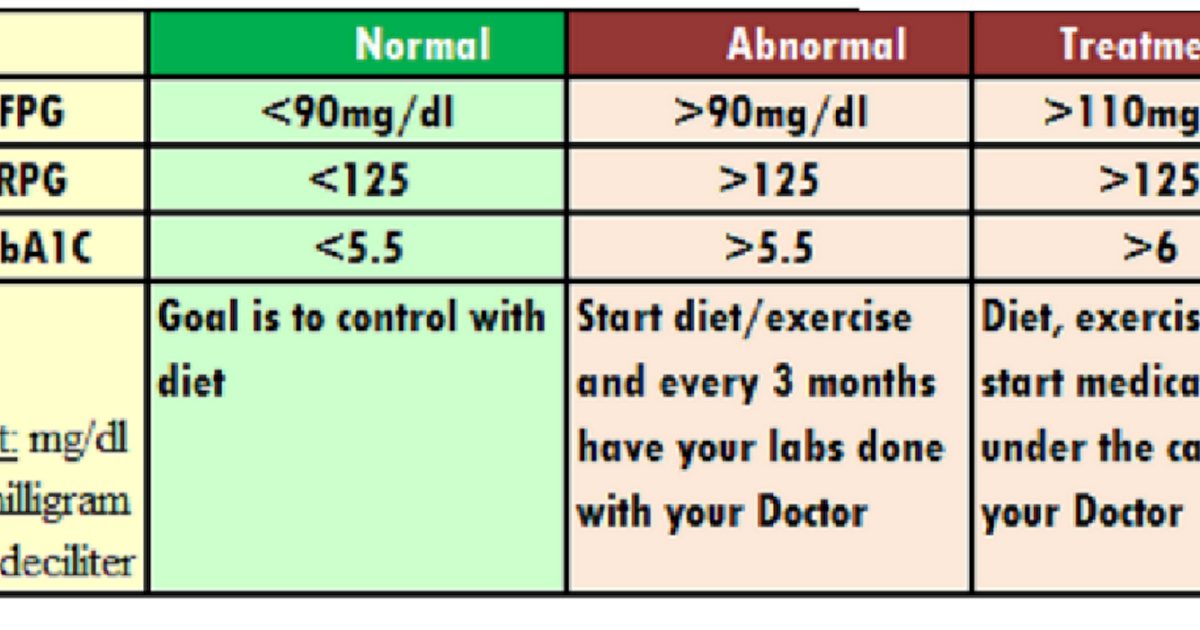
A blood sugar level outside the target range can have profound health implications. “When blood sugar levels are too high or too low, it can have serious health consequences, such as nerve damage, kidney damage and heart disease,” says Brenda Peralta, registered dietitian and certified diabetes educator at FeastGood.com.
High blood sugar (hyperglycemia) can lead to conditions like diabetes, cardiovascular disease and stroke, she explains. Low blood sugar (hypoglycemia) can cause confusion, anxiety, weakness, sweating and vision problems. Extremely low levels of blood sugar can result in seizures and fainting.
Why Does Blood Sugar Matter With Diabetes?
Diabetes is a condition that makes it difficult or impossible for the body to regulate glucose levels on its own. When someone is living with diabetes, their body is either unable to produce enough insulin—or make enough insulin available for use. Insulin is a hormone that helps the body use glucose for energy. When insulin levels are too low, glucose accumulates in the bloodstream and can damage organs and other tissues.
“Diabetes occurs when a person’s body cannot adequately manage sugar that’s ingested normally in our everyday diet,” says Jennifer Meller, M.D., chief medical officer at Sweetch—a digital health care innovation company based in Tel Aviv, Israel. “Chronically elevated sugar levels can lead to changes in both large and small blood vessels.”
Over time, changes to large vessels can lead to an increased risk of heart attack and stroke, while damage to small vessels can cause nerve damage, vision loss and kidney failure, explains Dr. Meller.
For people living with diabetes, maintaining healthy blood sugar levels is essential to preventing serious health complications in the future. This requires understanding target glucose levels for different age groups and making lifestyle changes accordingly, as blood sugar can go up or or down based on what you eat and when, among other factors.
What Is an A1C Number?
An A1C test, also called glycosylated hemoglobin, is a standard diagnostic tool used to measure a person’s average blood sugar levels over the past three months (90 days). It reflects how well your blood sugar is controlled during that time period.
It reflects how well your blood sugar is controlled during that time period.
“It’s an essential measure of blood sugar control in diabetes because it provides a long-term view of blood sugar levels and can help predict the risk of complications from diabetes,” explains Peralta.
The test uses a small blood sample to analyze the amount of hemoglobin—a protein found in red blood cells that carries oxygen and binds to glucose molecules. The higher the glucose level in your bloodstream, the more hemoglobin will bind to it and be detected by the A1C test. This test is often done with a finger prick in the doctor’s office..
An A1C number is expressed as a percentage, with higher percentages indicating higher levels of glucose in the bloodstream. A healthy A1C reading for someone without diabetes is between 4% and 5.7%. A value between 5.7% and 6.4% is considered prediabetic, while 6.5% and higher are consistent with diabetes tippy-popover-container-bg-white’ }”>[1]Hemoglobin A1C. National Library of Medicine. Accessed 1/2/2023. .
One important note to consider about one’s A1C number is that it may be affected by other medical conditions such as anemia, which could result in an inaccurate reading. This is why looking at additional numbers, such as one’s fasting glucose, in conjunction with an A1C number, is usually recommended.
How Is Blood Sugar Tested?
Blood sugar is often tested with a glucometer, which measures the amount of glucose in a sample of blood. A small drop of blood from the fingertip or arm is placed on a test strip and inserted into the glucometer. The results display on the glucometer’s LCD screen within a few seconds.
Another way to test blood sugar is via continuous glucose monitoring (CGM), which typically involves placing a disposable, water-resistant sensor on the back of the arm or stomach. These sensors can be scanned with a reader, and can be used for three to 14 days, depending on the brand. Many CGM sensors are used along with a smartphone, allowing the individual and others (such as caregivers) the ability to see glucose trends over the last eight hours.
Many CGM sensors are used along with a smartphone, allowing the individual and others (such as caregivers) the ability to see glucose trends over the last eight hours.
Those living with diabetes usually check their blood sugar levels several times a day, including before meals and snacks and two hours after eating.
In certain cases, a doctor may also order other tests, such as a fasting glucose test or an oral glucose tolerance test. These tests measure the glucose levels in the blood at specific times (fasting or after eating).
Analyze Your Glucose Levels in Real-Time with Nutrisense
Get invaluable data about your blood sugar response to food, exercise, and sleep in real-time with a Nutrisense Continuous Glucose Monitor
Get Started With $50 Off
When to Test Blood Sugar
For many people living with diabetes, standard times to test blood sugar are before meals and before bed. However, a doctor may ask someone to test their blood sugar as often as two hours after eating and in the middle of the night, depending on their condition.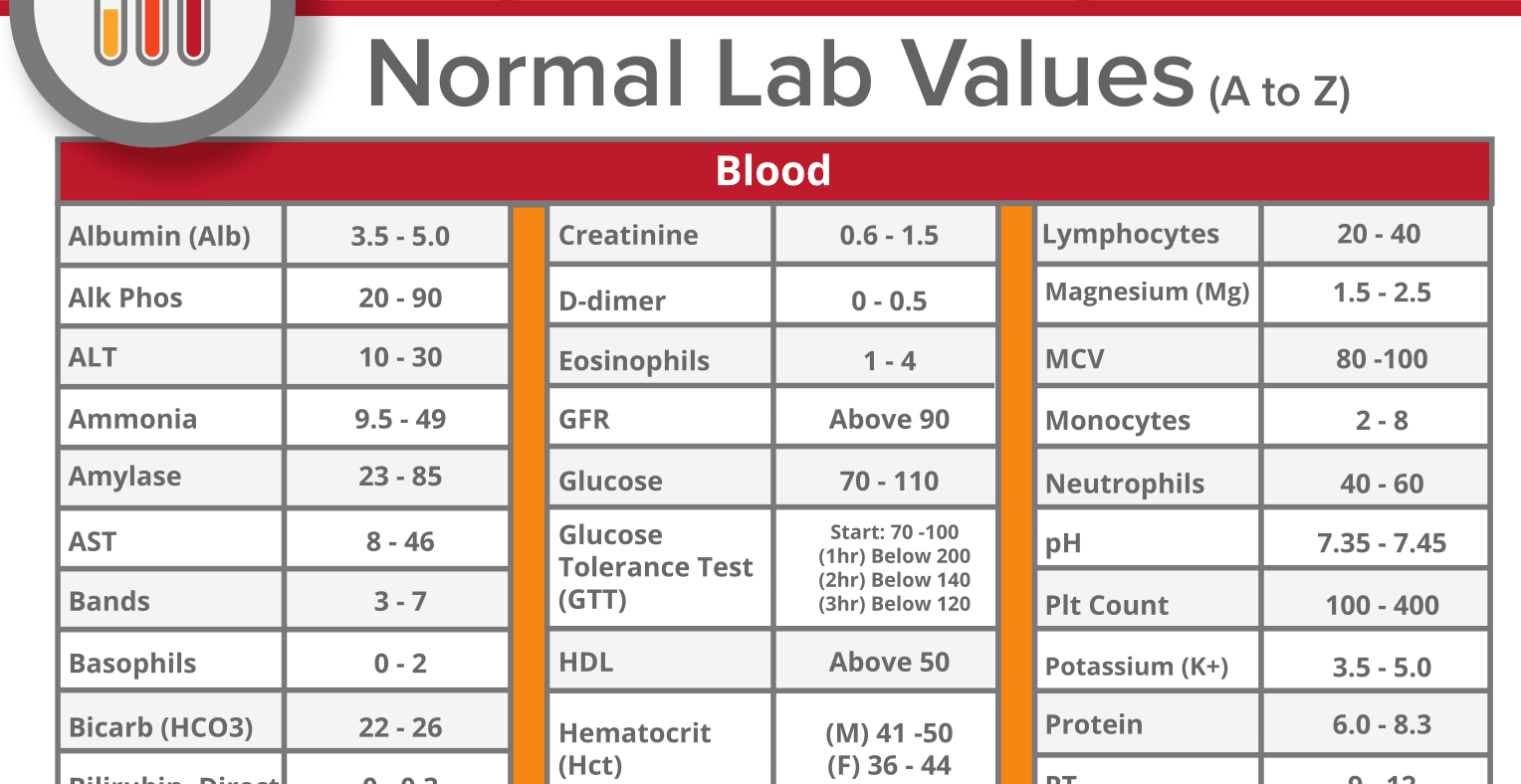 The best way to determine how often to test your blood sugar is by consulting with your doctor, who can recommend times based on your specific health needs.
The best way to determine how often to test your blood sugar is by consulting with your doctor, who can recommend times based on your specific health needs.
Other instances in which a person may consider testing their blood sugar include:
- When experiencing symptoms of low blood sugar, such as dizziness, sweating or confusion
- After dining at a restaurant or trying new foods
- When feeling sick
- When experiencing stress
- While consuming alcohol
- Before and after exercising
- When starting a new medication
- After taking too much insulin or diabetes medication
- After taking diabetes medication at the wrong time
Normal Blood Sugar Levels By Age (Children, Adults And Seniors)
It’s crucial to understand that normal blood sugar levels vary depending on age, lifestyle factors and health issues.
The chart below uses insight from studies including those conducted by the American Diabetes Association (ADA), the Centers for Disease Control and Prevention (CDC) and John Hopkins Medicine to illustrate the typically recommended blood sugar levels by age. It was reviewed by Dr. Meller.
It was reviewed by Dr. Meller.
| Children and Adolescents | Less than or equal to 100mg/dL | Greater than or equal to 126mg/dL | 80 to 130mg/dL | Less than 5.7 | 5.7-6.4 | Greater than or equal to 6.5 | Less than or equal to 7.0 | |||||||
| Adults | Less than or equal to 100mg/dL | Greater than or equal to 126mg/dL | 80 to 130mg/dL | Less than 5.7 | 5.7-6.4 | Greater than or equal to 6.5 | Less than or equal to 7.0 | |||||||
| Older adults | Less than or equal to 100mg/dL | Greater than or equal to 126mg/dL | 80 to 150 or 170mg/dL | Less than 5. 7 7 | 5.7-6.4 | Greater than or equal to 6.5 | Less than or equal to 7.5-8.0 | |||||||
| Disclaimer: These are general rules and may vary based on personal health circumstances. This table should not be used to modify a current treatment plan. Every individual should consult their doctor about the right target range for them. | ||||||||||||||
Fasting vs. Non-Fasting Blood Sugar Levels
Fasting and non-fasting blood sugar tests are used to screen individuals for diabetes and prediabetes.
Fasting blood sugar tests measure blood sugar levels after not having eaten for eight hours and are typically performed in the morning prior to breakfast. Fasting blood sugar levels may indicate that an individual is prediabetic or diabetic based on the following ranges.
- Normal: 99 mg/dL or lower
- Prediabetes: 100 mg/dL to 125 mg/dL
- Diabetes: 126 mg/dL or higher
Non-fasting blood sugar tests don’t require an individual to abstain from eating beforehand. Non-fasting blood sugar levels may indicate that an individual is prediabetic or diabetic based on the following ranges.
Non-fasting blood sugar levels may indicate that an individual is prediabetic or diabetic based on the following ranges.
- Normal: 140 mg/dL or lower
- Prediabetes: 140 mg/dL to 199 mg/dL
- Diabetes: 200 mg/dL or higher
Signs and Symptoms of Unbalanced Blood Sugar
If your blood sugar levels are consistently too high or low, you may experience certain signs and symptoms. According to Peralta and Dr. Meller, the following are common signs of unbalanced blood sugar:
Symptoms of high blood sugar include:
- Increased thirst
- Frequent urination
- Fatigue
- Blurred vision
- Slow-healing sores
- Weight loss
- Frequent infections
Symptoms of low blood sugar include:
- Hunger
- Shaking
- Sweating
- Rapid heartbeat
- Headache
- Dizziness
- Confusion and difficulty concentrating
What Level of Blood Sugar Is Dangerous?
Low blood sugar—or hypoglycemia—occurs when an individual’s glucose levels fall below 70 mg/dL. Severe low blood sugar occurs when glucose levels fall below 54 mg/dL and may lead to fainting. Low blood sugar is common in individuals with type 1 diabetes and requires treatment.
Severe low blood sugar occurs when glucose levels fall below 54 mg/dL and may lead to fainting. Low blood sugar is common in individuals with type 1 diabetes and requires treatment.
High blood sugar—or hyperglycemia—occurs when an individual’s glucose levels rise to 240 mg/dL or higher. If untreated, hyperglycemia may lead to ketoacidosis, a condition commonly known as diabetic coma.
Ketones are waste products made when the body breaks down fats due to insufficient insulin. They’re intolerable in large amounts and are released via a person’s urine. If the body is unable to release large amounts of ketones through urine, they may build up in the blood causing high ketone levels. This may lead to ketoacidosis, a medical emergency in which ketones make the blood more acidic, and requires immediate medical treatment.
What to Do When Blood Sugar Is Too High or Low
For individuals experiencing hypoglycemia, treatment consists of the following options:
- Taking four glucose tablets
- Drinking 4 ounces of fruit juice, such as apple or orange juice
- Drinking 4 ounces of soda
- Eating four pieces of hard candy
Individuals should test their blood sugar levels again 15 minutes after attempting to raise their blood sugar to determine whether glucose levels have reached 70 mg/dL or higher. If glucose levels remain low, continue one of the above treatments until blood sugar has returned to normal.
If glucose levels remain low, continue one of the above treatments until blood sugar has returned to normal.
Individuals experiencing hyperglycemia should use an over-the-counter test kit to measure ketone levels in their urine. If ketone levels are above 80 mg/dL, seek medical attention immediately.
If blood sugar levels are high but a urine test detects normal ketone levels, the following options may to help lower blood sugar:
- Stay hydrated: Dehydration can cause the sugar in your blood to become more concentrated, leading to higher glucose levels. Increasing your water intake can help regulate blood sugar by introducing more water into the bloodstream.
- Get more exercise: Physical activity makes your body more sensitive to insulin and lowers your blood sugar for up to 24 hours after exercise. If you have ketones, do not exercise. This may cause your blood sugar to rise even higher.
- Manage stress: Stress may lead to elevated blood sugar levels.
 Learning healthy ways to cope with stress through therapeutic activities (such as listening to music or going for a walk) can help combat high blood sugar.
Learning healthy ways to cope with stress through therapeutic activities (such as listening to music or going for a walk) can help combat high blood sugar. - Get enough sleep: Research indicates that poor sleep quality negatively affects the body’s ability to control blood sugar levels. Aim to get seven to eight hours of sleep per night. Speak with your health care provider if you suspect you may have a sleep disorder.
- Count carbohydrates: Carbohydrates are broken down into glucose during the digestion process and can cause blood sugar levels to rise. Counting carbs can help manage blood sugar levels and can help some people with diabetes make sure they’re getting enough insulin.
When to Talk With a Doctor About Blood Sugar
Diabetes is a serious condition, and it’s important to talk to your doctor if you’re concerned about your blood sugar levels. Your provider can order tests to confirm a diagnosis of diabetes or prediabetes and provide treatment recommendations. They may also suggest lifestyle changes to help keep your blood sugar within the recommended target range.
They may also suggest lifestyle changes to help keep your blood sugar within the recommended target range.
Taking steps to monitor and manage your blood sugar levels is key to maintaining good health and avoiding the long-term complications of diabetes. With proper care and regular check-ups, it’s very possible to manage your blood sugar levels.
Optimize Your Daily Health Performance
The Nutrisense Glucose Monitor helps you understand your response to food by receiving daily insight on your levels along with personalized support from a dietician.
Get Started With $50 Off
On Nutrisense’s Website
Frequently Asked Questions (FAQs)
What is a normal blood sugar level immediately after eating?
Normal blood sugar ranges one to two hours after eating are typically 180 mg/dL or lower in non-pregnant people with diabetes and 140 mg/dL or lower in pregnant people with diabetes, according to the American Diabetes Association.
What is a healthy blood sugar level in the morning?
Healthy blood sugar levels in the morning prior to eating range from 80 to 130 mg/dL.
What is a normal blood sugar level for a pregnant woman?
The American Diabetes Association recommends the following target ranges for pregnant people testing blood glucose levels:
- Fasting: 95 mg/dL or less
- One hour after eating: 140 mg/dL or less
- Two hours after eating: 120 mg/dL or less
Should I worry about blood sugar if I don’t have diabetes?
For individuals without diabetes, blood sugar testing is usually unnecessary. However, if you have certain risk factors for prediabetes, such as having obesity or excess body weight, being over 45 years old or having an immediate family member with type 2 diabetes, consult with your doctor to determine if you should test your blood sugar.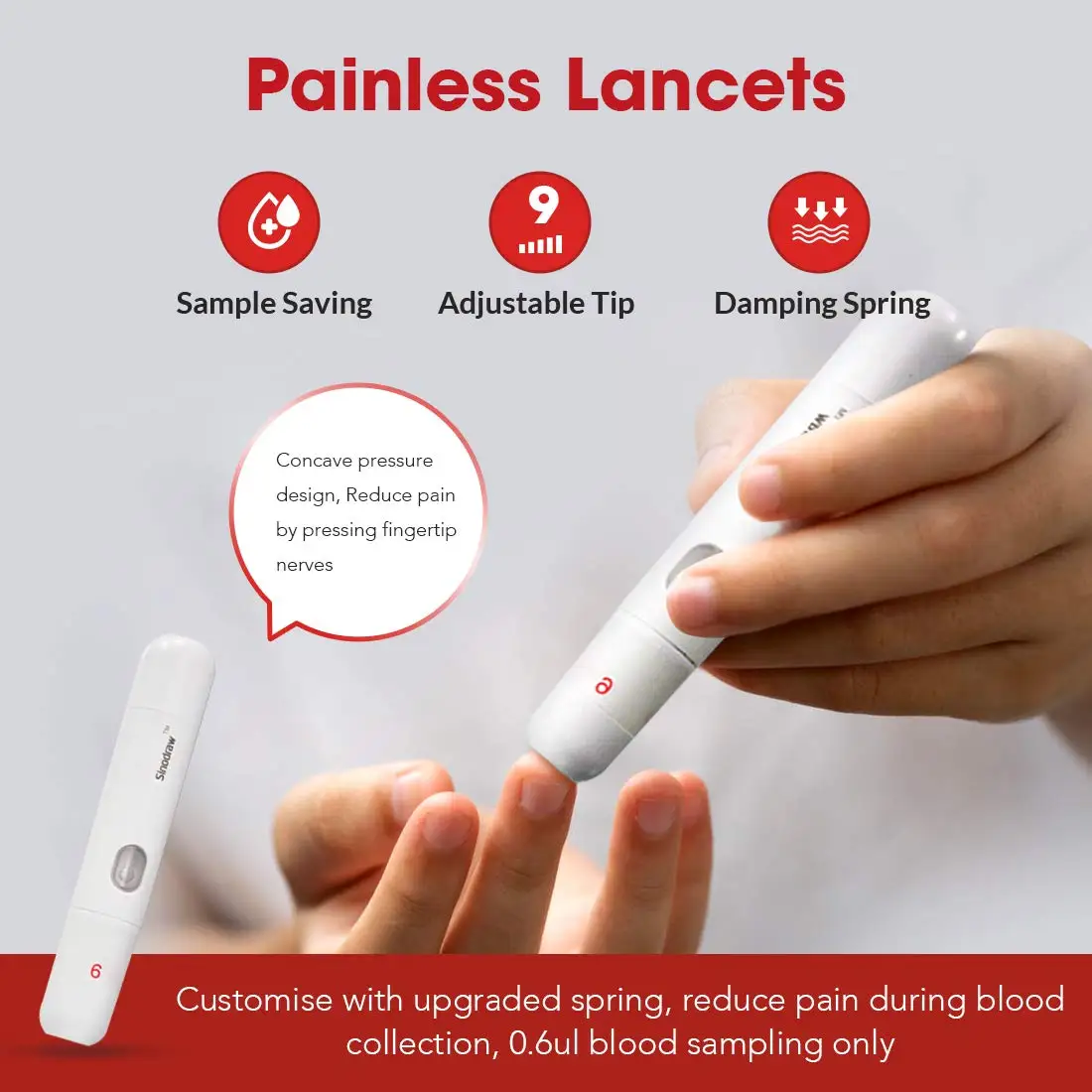
Why is my blood sugar high in the morning but normal all day?
High blood sugar levels in the morning may result from the dawn phenomenon, waning insulin and the Somogyi effect.
In the morning, the liver increases glucose production to give the body ample energy to wake up, triggering the pancreas to release insulin to keep blood sugar levels in check. However, individuals living with diabetes may not produce enough insulin to counter increases in blood sugar, which is known as the dawn phenomenon and affects nearly half of all individuals with both type 1 and type 2 diabetes.
Waning insulin occurs when an individual’s insulin levels fall too low overnight, causing blood sugar levels to rise. Insulin levels may fall for a variety of reasons and may be attributed to insulin pumps providing too little basal (background) insulin overnight or taking too low of a dose of long-acting insulin. Waning insulin may also occur if individuals inject long-lasting insulin too early.
The Somogyi effect refers to an individual’s blood sugar levels falling too low overnight. The body may produce extra glucose to compensate, resulting in high blood sugar levels in the morning.
experiment of the Finnish biohacker Ilmo Stremberg — Personal experience on vc.ru
Testing a sensor for continuous monitoring of blood glucose levels from the Finnish startup VERI in the Reminder publication.
57,079
views
A new sensor for continuous monitoring of blood glucose levels from the Finnish startup VERI has not yet entered the market. I managed to get early access to it at the very end of 2020.
Before that, like most non-diabetics, I knew little about the importance of blood sugar and even less about how to control it. But in just two weeks of testing, I reached a completely new level of understanding the work of my body. The English version of the report on this experiment can be read on my personal blog.
Why measure blood glucose if you don’t have diabetes?
For diabetics, continuous glucose monitoring helps keep blood sugar levels within a more or less safe range to avoid worse complications. For everyone else, doctors recommend donating “blood for sugar” no more than once a year. Let’s say you took this test and made sure that your glucose level does not exceed the maximum allowable value. Why measure again?
For everyone else, doctors recommend donating “blood for sugar” no more than once a year. Let’s say you took this test and made sure that your glucose level does not exceed the maximum allowable value. Why measure again?
A standard one-time fasting finger or vein blood test is something like a snapshot. It does not show how your diet and lifestyle affect carbohydrate metabolism in the long term. According to the standards of the American Diabetes Association, the norm is no more than 5.6 mmol / l of blood plasma on an empty stomach.
But many recent studies have convincingly shown that even within this norm there are indicators that are more dangerous and less dangerous. For example, if the glucose level exceeds 5.5 mmol/L, the risk of developing type 2 diabetes is three times higher than at 4.6 mmol/L. Namely, diabetes often sets the stage for deadly pathologies: cardiovascular disease, cancer and Alzheimer’s disease.
Diabetes is usually preceded by so-called pre-diabetes. According to the US Centers for Disease Control and Prevention, it affects more than 25% of the population in the US, and just under 20% in Finland (in Russia, according to estimates, about the same figures. – Reminder) . This means that nearly one in five post-meal blood sugar levels are higher than normal and stay at their peak for longer than a healthy person. But on an empty stomach can be normal. Bye.
According to the US Centers for Disease Control and Prevention, it affects more than 25% of the population in the US, and just under 20% in Finland (in Russia, according to estimates, about the same figures. – Reminder) . This means that nearly one in five post-meal blood sugar levels are higher than normal and stay at their peak for longer than a healthy person. But on an empty stomach can be normal. Bye.
Levels Health, also a real-time glucose monitoring company, recently published an excellent guide to blood sugar levels based on the latest medical research. Here are the indicators in it called optimal.
The risk of disease is not the only fact that convinced me of the importance of this indicator. Productivity – physical and mental – directly depends on the level of glucose in the blood. Sluggishness and fog in the head are very often associated with sugar fluctuations, but this factor is usually not taken into account at all.
You need constant monitoring of blood sugar if:
— You strive for longevity and maintaining physical fitness.
— Want to eliminate a potential factor in reducing productivity.
– You have relatives with diabetes – a predisposition to it is often genetically transmitted.
How does VERI work and what does it measure?
Veri means blood in Finnish, but you won’t see it when you insert the sensor. This is a coin-sized round applicator that attaches to the forearm. Although it has a thin, flexible needle to measure sugar levels, it is painless to insert under the skin.
After an hour of calibration, the VERI is ready to go. Its readings can be taken with a smartphone by bringing the camera to the sensor (gadgets of this type are already on the market, we wrote about them in detail in our review – Reminder) .
All data is processed and visualized in the VERI application – so far only on the iPhone. In the near future, the developers plan to add a personalization mechanism to the application, which will calculate the minimum and maximum values, taking into account age, weight, diet and other individual parameters.
The difference between VERI and other wearable glucose sensors is that it does more than just measure sugar levels. The manufacturer calls this device a “compass for metabolic health.” In practice, this means that it registers some more interesting indicators.
Stability index – Calculated based on three indicators: 1) peak blood glucose immediately after a meal, 2) glucose level two hours after a meal, and 3) the number of minutes during which glucose levels after reaching a peak value exceeds the norm. For example, when I ate a fresh salad with salmon, my stability index was close to ideal – 9/10. The surge in glucose levels was minimal, and after two hours its concentration steadily returned to the average.
- Metabolic flow: summarizes and rates a range of indicators on a scale of up to 100. The two most important are: 1) how much time per week the sugar level is in the optimal range (+/- 1 mmol / l) and 2) how much the glucose concentration deviates from the average level during the day.
 The best indicator is less than 0.6 mmol / l.
The best indicator is less than 0.6 mmol / l. - Number of sugar spikes per day. Ideally, there should be no more than one. Here is one such peak that I recorded in the morning.
Another useful option is the ability to take photos of food in order to establish a correlation between the stability index and the consumption of certain foods. Even more convenient, products can be sorted by this criterion.
This is a very simple and visual way to determine which food suits you best. In addition, there is the ability to monitor your sugar levels during workouts and integration with the Apple Health app so that all sensor data is automatically uploaded to your personal cloud journal.
While testing VERI, I noticed a couple of shortcomings. Four times in two weeks, the application recorded a gap in the data – in the range from 2 to 10 hours. It also turned out that when visiting a sauna or with strong cooling, the sensor can give incorrect information.
One sensor costs 129 euros and lasts for two weeks. At the end of this period, you receive a final report in which all indicators are summarized. Here’s what happened to me: the average glucose level is 4.3 mmol / l.
Experiment progress
To make the results of the experiment more revealing, I decided to start by asking three simple and specific questions:
Does the blood sugar level depend on a 30-minute walk after dinner?
- Does standing work affect glucose concentration?
- Is there a relationship between blood sugar fluctuations and sleep quality?
During the experiment, only parameters such as the choice of products for lunch, walking and position during work varied; the rest of the conditions (breakfast menu, sleep and wake-up times) remained unchanged.
Walk after eating
For the first two days, I ate a standard 30cm Subway tuna sandwich for lunch. According to the official information of the manufacturer, it contains 75 grams of carbohydrates, including 9 grams of added sugar. Enough to cause a spike in glucose immediately after a meal.
According to the official information of the manufacturer, it contains 75 grams of carbohydrates, including 9 grams of added sugar. Enough to cause a spike in glucose immediately after a meal.
Indeed, the index of stability on the day without a walk turned out to be 7 out of 10. But the next day, when I walked only half an hour after lunch, it went up by as much as two points. Other indicators also differed greatly. Based on this trend, if I had increased my walking time by another 30 minutes, I would not have experienced a post-lunch glucose spike at all.
Standing work
This test was inspired by a study that found that two hours of standing in an office reduced post-meal glucose peaks by as much as 43%.
On the day of the experiment, I increased my standing time to 3 hours and ate a decent 600 grams of salmon lasagna. The result was stunning, especially considering that lasagna is not the healthiest food: according to the resource Myfitnesspal, my portion had 60 grams of carbohydrates.
So, the stability index is 10 (maximum), the concentration of glucose at the time of the peak is only 4.8 mmol/l, and after two hours it is 4.5 mmol/l.
Holidays and sugar
My experiment partly fell on the New Year holidays, which gave me the opportunity to check how disturbances in the usual rhythm of eating affect the glucose balance. Spoiler: The worst metabolic rate of the entire experiment was recorded by the sensor on Christmas Eve after a large portion of rice pudding with blueberry sauce.
I made a graph of metabolic flow fluctuations, compared them with my diet and found a clear pattern: the worst indicators fell on those days when I often had a snack – I ate chocolates, bananas, gingerbread; the highest were strongly correlated with healthy eating such as fresh salad and physical activity, including standing.
But not all tasty food turned out to be equally harmful. For example, kombucha, raisin curd, blueberry smoothie, and collagen protein bar, on the other hand, improved my metabolic rate by 9-10 points. As a champion of healthy snacks, I was especially pleased.
As a champion of healthy snacks, I was especially pleased.
Sleep and sugar
There is scientific evidence that blood sugar and sleep quality are related. Sleep problems increase the risk of developing type 2 diabetes, and frequent fluctuations in blood sugar levels are observed in people with sleep apnea.
To test this connection for myself, I took the sleep tracking data collected during the experiment with the Oura ring and compared it with the VERI scores. The clearest correlation was found between the number of glucose peaks and the quality of sleep. The more sugar spikes I had during the day, the worse I slept the next night.
Terminals
Of course, a two-week study without benchmarks is not enough to draw far-reaching conclusions. But if, like me, you were wondering if there is a biohacking gadget that can help you lower your sugar levels by 50%, improve sleep, give you a boost of energy and mental clarity, then this experiment will give you an unexpected answer: no gadget is for you. this is not needed.
this is not needed.
You already have everything you need. It is enough to walk half an hour after lunch, periodically stand during work – and your physical performance will noticeably improve. I have always believed in non-exercise movement and standing work. But to see their effectiveness with your own eyes is a valuable experience.
The article was prepared by the online publication Reminder, which is dedicated to health, psychology and practical philosophy. More useful information can be found on our Facebook pages, Telegram or mailing list.
More on Reminder:
- How to stay focused: Lessons in Japanese zanshin practice
- How We Die: Physician Haider Warraitsch on Why Human Body Cells Destroy themselves
- 101 ways to make life easier: small tricks that solve big problems
Glucose. Animal glucose monitoring
Dear friends!
Diabetes mellitus is a disease that is called “gentle killer”. It is impossible to detect it without a blood test in the early stages even in humans, not to mention animals. However, it is the detection of the disease at an early stage that guarantees successful treatment.
It is impossible to detect it without a blood test in the early stages even in humans, not to mention animals. However, it is the detection of the disease at an early stage that guarantees successful treatment.
Our technicians can check your pet’s blood sugar levels with a blood glucose meter to determine if there is a problem. Ask your stylist about the possibility of measuring your dog’s sugar level
Why measure blood sugar?
Changes in blood sugar may be a symptom of diseases that can lead to convulsions, shock, coma. Blood sugar levels can be either high or low.
Diabetes mellitus (diabetes mellitus) is a chronic endocrine-metabolic disease caused by an absolute or relative deficiency of the hormone insulin. The disease develops due to the influence of various factors, and is characterized by a metabolic disorder with its most constant manifestation – hyperglycemia (increased sugar), the development of damage to blood vessels, nerves, various organs and tissues.
Diabetes mellitus in dogs occurs in 95% of cases in non-neutered females, aged 7-8 years and older. In dogs, diabetes mellitus appears no earlier than 5 years, in cats – at the age of 9-11 years , provided that they are fed with natural products . In neutered cats and cats, diabetes may appear later, in non-neutered cats – earlier, at 5-6 years of age. The exact cause of the disease has not yet been established; hereditary predisposition, hormonal disorders, and severe infectious and systemic diseases are considered as predisposing factors.
The main clinical signs that make it possible to suspect diabetes mellitus in dogs are: increased thirst and frequent copious urination (polyuria and polydipsia), lethargy, thinness.
There are two forms of diabetes mellitus in animals:
Type I diabetes mellitus (insulin-dependent) occurs at a young age and is accompanied by a pronounced decrease or complete absence of secretion of one’s own insulin. The only treatment for type 1 diabetes is lifelong insulin injections; without this treatment, patients die of ketoacidosis.
The only treatment for type 1 diabetes is lifelong insulin injections; without this treatment, patients die of ketoacidosis.
Type II diabetes mellitus occurs in middle age. With it, the secretion of its own insulin is preserved, but insufficient and of an irregular nature. Keeshonds, Bullets, Miniature Pinschers, Cairn Terriers and, to a lesser extent, Poodles, Dachshunds, Miniature Schnauzers and Beagles are predisposed to diabetes. Obesity predisposes to diabetes.
Diagnosis is made by measuring blood glucose levels. When the level of glucose in the venous blood is above 11 mmol / l, the diagnosis is made – diabetes mellitus.
Blood for biochemical examination using test strips, blood is taken by puncturing the blood vessels of the tips of the ears, it is possible to take blood from the crumb of the fingers.
Animals suffering from diabetes mellitus may exhibit various complications. Often there is a cataract, accompanied by progressive clouding of the lens. In dogs, diabetic retinopathy, skin lesions, especially in advanced cases of diabetes, are common, and they are also localized in the limbs, on the muzzle, and tail.
Today, there are a huge number of MYTHS regarding the treatment of diabetes in dogs, which not only interfere with the effective and safe treatment of diabetes, but in many cases simply destroy animals.
MYTH 1 . It is useless to treat diabetes, this is torture for the animal and the animal will die anyway. Treatment of diabetes in dogs is well established, safe, and even more effective than in humans. The only thing that is required from the owner is to learn how to measure glucose twice a day and inject insulin. These procedures are simple to perform and painless. Dogs with diabetes can even live longer than healthy dogs, thanks in large part to daily metabolic monitoring, proper nutrition and care.
MYTH 2. It is difficult for a dog to take blood to measure glucose levels and human glucometers and needles (lancets) are not suitable for this. The technology of taking blood from dogs is perfectly developed, absolutely painless and elementary in execution.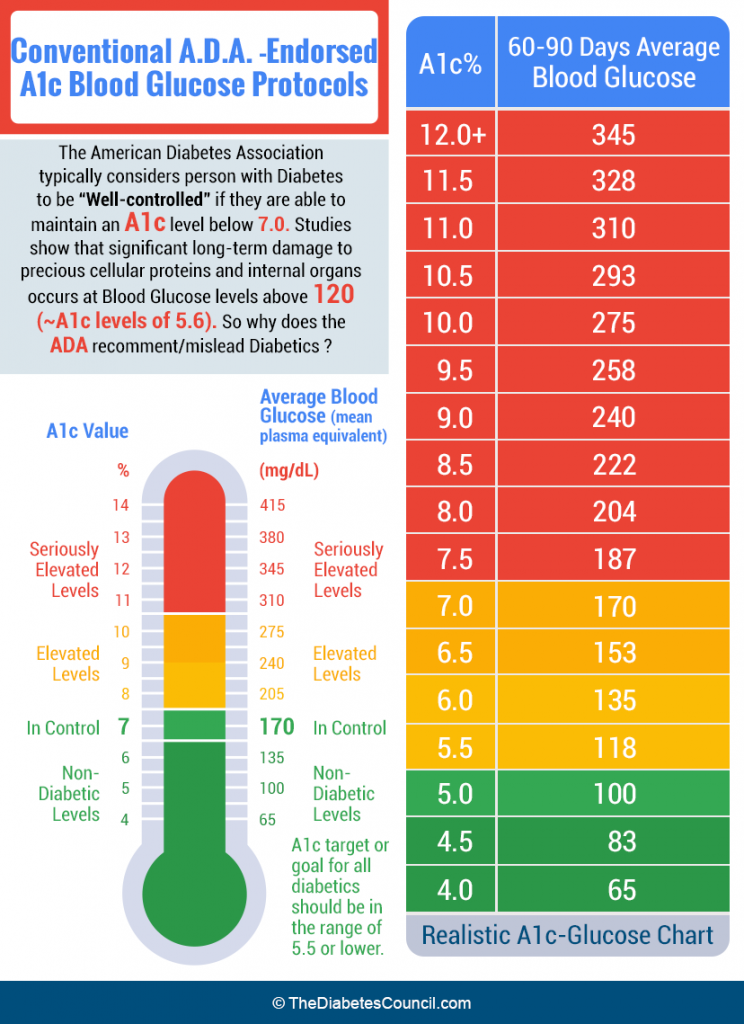 Modern medical glucometers and lancets are suitable for daily monitoring of glucose levels.
Modern medical glucometers and lancets are suitable for daily monitoring of glucose levels.
MYTH 3 . Blood to control glucose levels can be taken periodically – 1-2 times a month, and insulin can be administered – approximately, according to the condition of the dog (a little more – a little less). This is absolutely illiterate and extremely dangerous! Only on the basis of two daily glucose measurements is the insulin level accurately controlled for each injection. Approximate selection of the dose of insulin leads either to not correcting the level of glucose (permanent hyperglycemia), which nullifies the point of treating diabetes, or to the development of hypoglycemia, coma and death.
MYTH 4 . Many owners say: “My dog always has high (above 15-20 mmol/L) glucose levels and feels great. So everything is fine and there is nothing more to do, why else lower the glucose level? The pathological process associated with elevated glucose levels stops only when the glucose level is kept at a normal level of 4. 5-7.5 mmol / l. If the glucose level is not corrected, despite the introduction of insulin, the process of damage to the vascular and nervous system continues, although unnoticed by the owner. The concept of diabetes treatment is the most complete, and not partial correction of glucose levels.
5-7.5 mmol / l. If the glucose level is not corrected, despite the introduction of insulin, the process of damage to the vascular and nervous system continues, although unnoticed by the owner. The concept of diabetes treatment is the most complete, and not partial correction of glucose levels.
MYTH 5. “Our dog has developed diabetes. She is not sterilized. Doctors say that she needs to be sterilized, but we are very afraid of the operation. They say that there can be severe complications, it will be difficult to heal, etc…” A dog with diabetes should be spayed as early as possible and without fail. Against the background of hormonal changes during estrus, the level of glucose in the blood will change dramatically and abruptly. Many diabetic dogs in estrus die from hypoglycemic coma. Spaying your dog is the first thing you should do after insulin stabilizes your blood glucose levels. There will be no complications and operational problems with a controlled blood glucose level in a dog.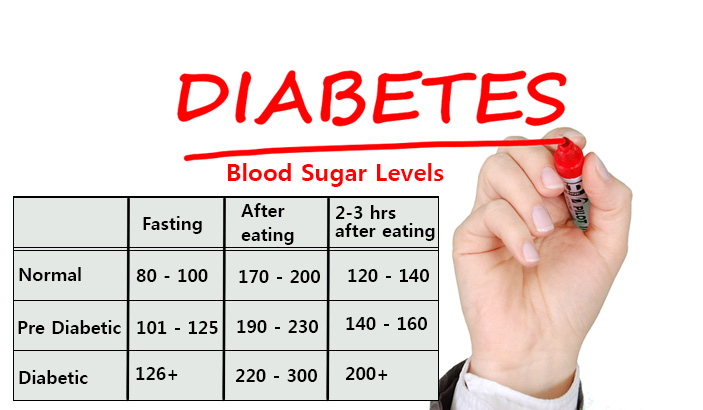
MYTH 6 . “If the dog is properly treated, he should make a full recovery and won’t need to do anything else, or at least not need to measure his sugar levels and inject insulin.” Diabetes mellitus cannot be cured, the animal will never be able to produce its own insulin and regulate sugar levels on its own. Diabetes treatment is lifelong and consists of continuous and daily measurement of blood glucose levels and administration of insulin. Only under this condition the dog will be able to live comfortably, long and fully. If insulin is discontinued, the animal will die.
What are the causes of hypoglycemia?
Acute hypoglycemia is a life-threatening condition. Glucose is the main substrate for energy production in the central nervous system. With its deficiency, episodes of weakness, constant drowsiness, extremely rapid fatigue, behavioral deviations of an unclear nature, and lack of appetite occur. With a further drop in sugar levels, muscle tremors, ataxia (impaired coordination), and convulsions occur.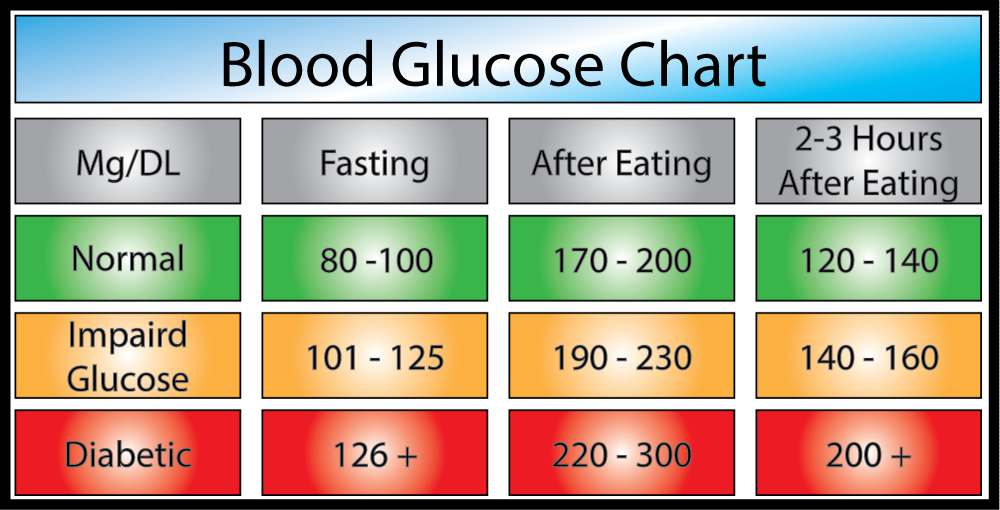 The final stage of the process is hypoglycemic coma.
The final stage of the process is hypoglycemic coma.
Which animals are more sensitive to hypoglycemia? Especially sensitive to a lack of glucose are puppies and kittens under the age of two weeks, as well as dwarf breeds of dogs.
How is hypoglycemia diagnosed?
Hypoglycemia is diagnosed based on clinical symptoms and blood sample results. For this, a special device is used – a glucometer, which allows the doctor to accurately and quickly determine the concentration of glucose in the patient’s blood. The normal glucose level for an animal is in the range of at least 3.4 mmol/L. A decrease in blood glucose to 1.3 mmol/l is accompanied by convulsions, with a further decrease, hypoglycemic coma develops and the animal may die.
How does hypoglycemia manifest itself?
Hypoglycemia is accompanied by a breakdown, tremor, nervousness, polyphagia, tachycardia, ataxia, muscle fasciculation (impaired coordination of muscle contractions, discoordination, visual disturbances, generalized seizures, nervous disorders).

 This can make it seem like diabetes defines them and all you see is their numbers.
This can make it seem like diabetes defines them and all you see is their numbers.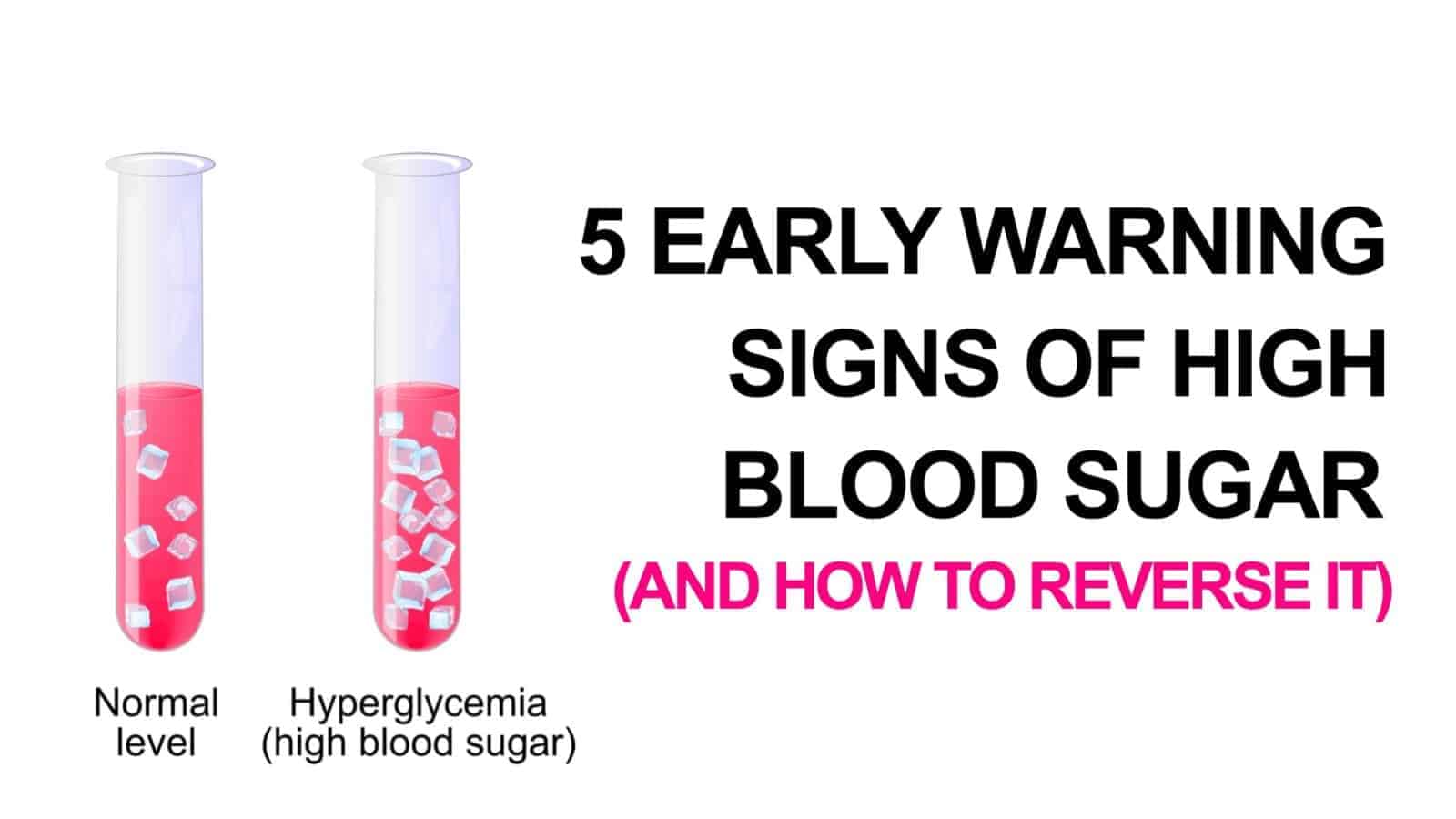 Learning healthy ways to cope with stress through therapeutic activities (such as listening to music or going for a walk) can help combat high blood sugar.
Learning healthy ways to cope with stress through therapeutic activities (such as listening to music or going for a walk) can help combat high blood sugar.
 The best indicator is less than 0.6 mmol / l.
The best indicator is less than 0.6 mmol / l.